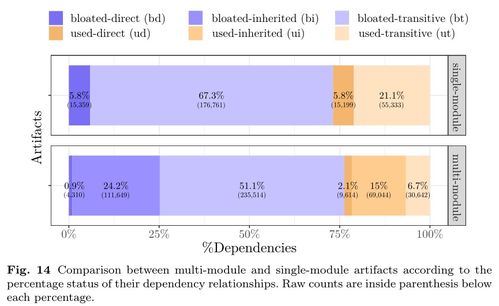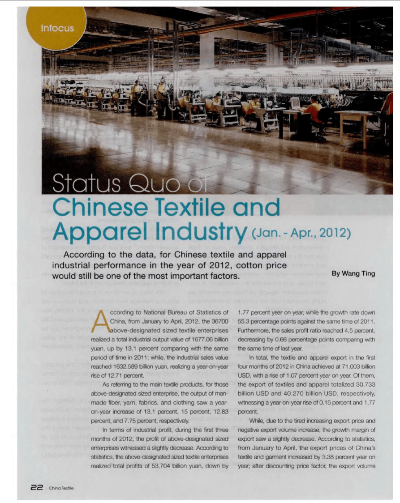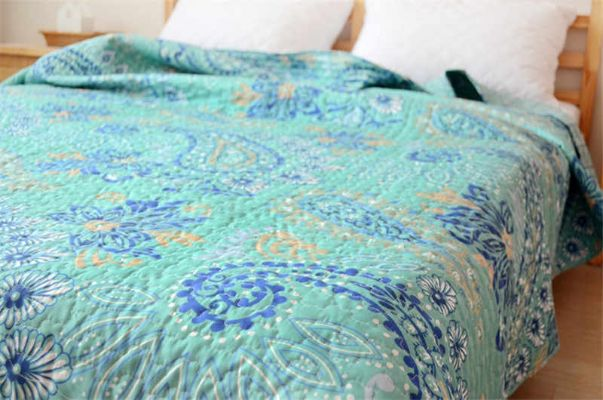A Comprehensive Overview of Textile Testing by Functionality
This paper provides a comprehensive overview of textile testing methods based on functionality. Textiles are used in various applications, and their performance is crucial for their use. Therefore, it is important to test the textiles for their functionality before they are used. The testing methods include mechanical tests, chemical tests, and biological tests. Mechanical tests measure the strength, flexibility, and durability of the textiles. Chemical tests evaluate the resistance to chemicals and solvents. Biological tests assess the resistance to bacteria, fungi, and insects. The testing methods are essential for ensuring the safety and effectiveness of the textiles.

Textile testing is an essential part of ensuring the quality, durability, and performance of textile products. It involves various tests that evaluate different aspects of textile materials, such as strength, flexibility, resistance to wear and tear, thermal properties, and more. In this article, we will discuss the different types of textile testing based on their functionality and provide some case studies to illustrate how these tests are used in real-world applications.
-
Strength Testing Strength testing is crucial for assessing the resilience of textile materials against external forces. This includes tests like tensile strength, burst strength, and tear strength. For example, a company might test a new fabric for its sportswear line to ensure it can withstand heavy use without breaking or losing its shape. They might also conduct compression tests to measure the material's ability to resist being compressed under specific conditions.
-
Flexibility Testing Determining the extent to which a textile material can bend or stretch without breaking is important for many applications, including clothing and home furnishings. Flexibility testing typically involves measuring the elongation (how much a material can be stretched before breaking) and recovery (how much it returns to its original shape after stretching). A common example is a company testing a fabric for its upholstery product to ensure it can accommodate furniture movement without becoming distorted.
-
Durability Testing Durability tests focus on evaluating the longevity of a textile material under various environmental conditions. These tests help determine how well a material can resist wear and tear over time. For instance, a textile company might test a fabric for outdoor use to see how well it resists fading, pilling, and other weather-related issues. Another example is a garment manufacturer testing a fabric for its swimwear collection to ensure it can withstand chlorine exposure without losing its color or texture.
-
Thermal Properties Testing Thermal properties testing is essential for understanding how a textile material responds to heat and cold. This includes tests like thermal conductivity, thermal insulation, and flame resistance. A company might test a fabric for its winter coat collection to ensure it provides adequate warmth without causing discomfort or fire hazards. Similarly, a fashion brand might test a fabric for its summer dress collection to ensure it can keep cool and dry under hot weather conditions.
-
Waterproofing Testing Waterproofing testing is crucial for many applications, especially in industries like construction and outdoor gear. This type of testing evaluates how well a textile material can resist water penetration. For example, a construction company might test a fabric for its roofing panels to ensure they can withstand heavy rainfall without leaking. Another example is a camping gear manufacturer testing a fabric for its tents to ensure they can withstand exposure to moisture without becoming damaged.
-
Medical Applications Testing Medical textiles, such as surgical gowns and bandages, require special attention to safety and efficacy. This type of testing focuses on evaluating the material's ability to prevent cross-contamination and maintain sterility. A hospital might test a fabric for its surgical gowns to ensure they meet specific sterilization standards. Similarly, a medical supply company might test a fabric for its bandages to ensure they can effectively prevent bloodborne pathogens from spreading.
-
Eye Safety Testing Eye safety testing is crucial for protecting workers from potential eye injuries caused by textile materials. This type of testing evaluates the material's ability to prevent scratches and other injuries to the eyes during handling. A factory might test a fabric for its industrial gloves to ensure they do not cause damage to workers' eyes. Another example is a clothing brand testing a fabric for its sunglasses frames to ensure they do not scratch the lenses or cause discomfort to the wearer.
-
Fire Retardant Testing Fire retardant testing is essential for textile materials used in high-risk environments, such as aircraft interiors and electronic equipment. This type of testing evaluates how well a material can resist combustion and burns. A company might test a fabric for its airplane seats to ensure they can withstand intense heat without catching fire. Another example is a tech company testing a fabric for its laptop bags to ensure they can withstand exposure to high temperatures without damaging the electronic components inside.
-
Odor Control Testing Odor control testing is crucial for textiles used in food contact applications, such as kitchen towels and tablecloths. This type of testing evaluates the material's ability to absorb and neutralize odors. A restaurant might test a fabric for its tablecloths to ensure they can effectively remove stains and maintain a pleasant dining experience. Another example is a hospitality company testing a fabric for its napkins to ensure they can absorb spills and leave a clean impression on customers.
-
Biodegradable Testing Biodegradable testing is becoming increasingly important as concerns about environmental sustainability grow. This type of testing evaluates how well a textile material decomposes when exposed to soil or water. A company might test a fabric for its outdoor apparel to ensure it can break down naturally without harming the environment. Another example is a fashion brand testing a fabric for its swimwear collection to ensure it can decompose quickly and safely in the ocean.

In conclusion, textile testing plays a vital role in ensuring the quality, safety, and performance of textile products. By understanding the different types of textile testing based on their functionality, businesses can better design and manufacture products that meet the needs of their target audience while also prioritizing environmental sustainability.
在纺织品研发和生产过程中,功能测试是非常重要的一环,本文将按照功能分类,详细介绍纺织品测试的方法和标准,并通过案例分析来说明其实际应用。
纺织品测试按照功能分类
功能性测试分类
根据纺织品的功能特性,可以将纺织品测试分为以下几类:
(1)舒适性测试:测试纺织品在穿着时的舒适度,包括透气性、吸湿性、柔软度等。
(2)耐用性测试:测试纺织品在长期使用过程中的耐久性,包括抗拉强度、耐磨性、抗化学腐蚀等。
(3)环保性测试:测试纺织品对环境的影响,包括阻燃性、无毒性、可降解性等。
(4)功能性面料分类:根据纺织品的主要功能特性,如防静电、抗菌、吸音等,进行分类测试。
案例分析

以某品牌的高档丝绸面料为例,其功能性测试主要包括舒适性、耐用性和环保性三个方面。
(1)舒适性测试案例:该面料采用了先进的透气技术,确保穿着者在穿着过程中能够保持干爽舒适,面料还具有很好的吸湿性和柔软度,使得穿着者在使用过程中能够感受到良好的舒适度。
(2)耐用性测试案例:该面料经过严格的抗拉强度和耐磨性测试,证明其在长期使用过程中具有很好的耐久性,该面料还具有很好的环保性,符合国家相关环保标准。
(3)环保性测试案例:该面料采用了阻燃材料和环保染料,确保在使用过程中不会产生有害物质,对环境友好,该面料还具有很好的可降解性,符合当前绿色环保的趋势。
纺织品测试方法与标准
测试方法
纺织品测试方法主要包括感官检测、物理性能检测、化学性能检测等,感官检测主要是通过观察纺织品外观、手感、质地等来评估其舒适度和美观度;物理性能检测主要是通过测量纺织品的透气性、吸湿性、柔软度等指标来评估其功能性;化学性能检测主要是通过检测纺织品对环境的影响来评估其环保性。
测试标准
纺织品测试标准是根据纺织品的特性和用途制定的,主要包括国家相关标准和行业标准,对于舒适性测试,国家标准规定了透气性、吸湿性等指标的测试方法及标准;对于耐用性测试,行业标准规定了抗拉强度、耐磨性等指标的测试方法及要求。
纺织品测试是确保纺织品质量的重要手段,本文按照功能分类介绍了纺织品测试的方法和标准,并通过案例分析来说明其实际应用,在实际操作中,我们应该根据纺织品的特性和用途选择合适的测试方法和标准,以确保纺织品的质量和性能符合要求,我们还需要不断更新和完善纺织品测试标准,以适应纺织行业的发展需求。
Articles related to the knowledge points of this article:
Textile Manufacturing Process Overview
Unlocking the Benefits of EPR Compliance for French Textile Exporters



